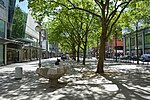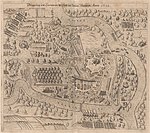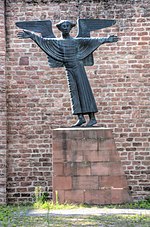Action at Mannheim (1795)

The action at Mannheim began in April 1795 when two French armies crossed the Rhine and converged on the confluence of the Main and the Rhine. Initial action at Mannheim resulted in a minor skirmish, but the Bavarian commander negotiated a quick truce with the French and withdrew. On 17 October 1795, 17,000 Habsburg Austrian troops under the command of Dagobert Sigmund von Wurmser engaged 12,000 soldiers, led by Jean-Charles Pichegru in the grounds outside the city of Mannheim. In a combination of maneuvers, the Habsburg army forced 10,000 of the French forces to withdraw into the city itself; other French troops fled to join neighboring Republican armies. First Coalition forces then laid siege to Mannheim. Subsequent action at neighboring cities forced the French to withdraw further westward toward France; after a month's siege, the 10,000-strong Republican French garrison now commanded by Anne Charles Basset Montaigu surrendered to 25,000 Austrians commanded by Wurmser. This surrender brought the 1795 campaign in Germany to an end. The battle and siege occurred during the War of the First Coalition, part of the French Revolutionary Wars. Situated on the Rhine River at its confluence with the Neckar River, Mannheim lies in the federal state of Baden-Württemberg in modern-day Germany.
Excerpt from the Wikipedia article Action at Mannheim (1795) (License: CC BY-SA 3.0, Authors, Images).Action at Mannheim (1795)
Carl-Friedrich-Straße, Mannheim Innenstadt (Innenstadt/Jungbusch)
Geographical coordinates (GPS) Address Nearby Places Show on map
Geographical coordinates (GPS)
| Latitude | Longitude |
|---|---|
| N 49.488888888889 ° | E 8.4691666666667 ° |
Address
Carl-Friedrich-Straße
68161 Mannheim, Innenstadt (Innenstadt/Jungbusch)
Baden-Württemberg, Germany
Open on Google Maps








